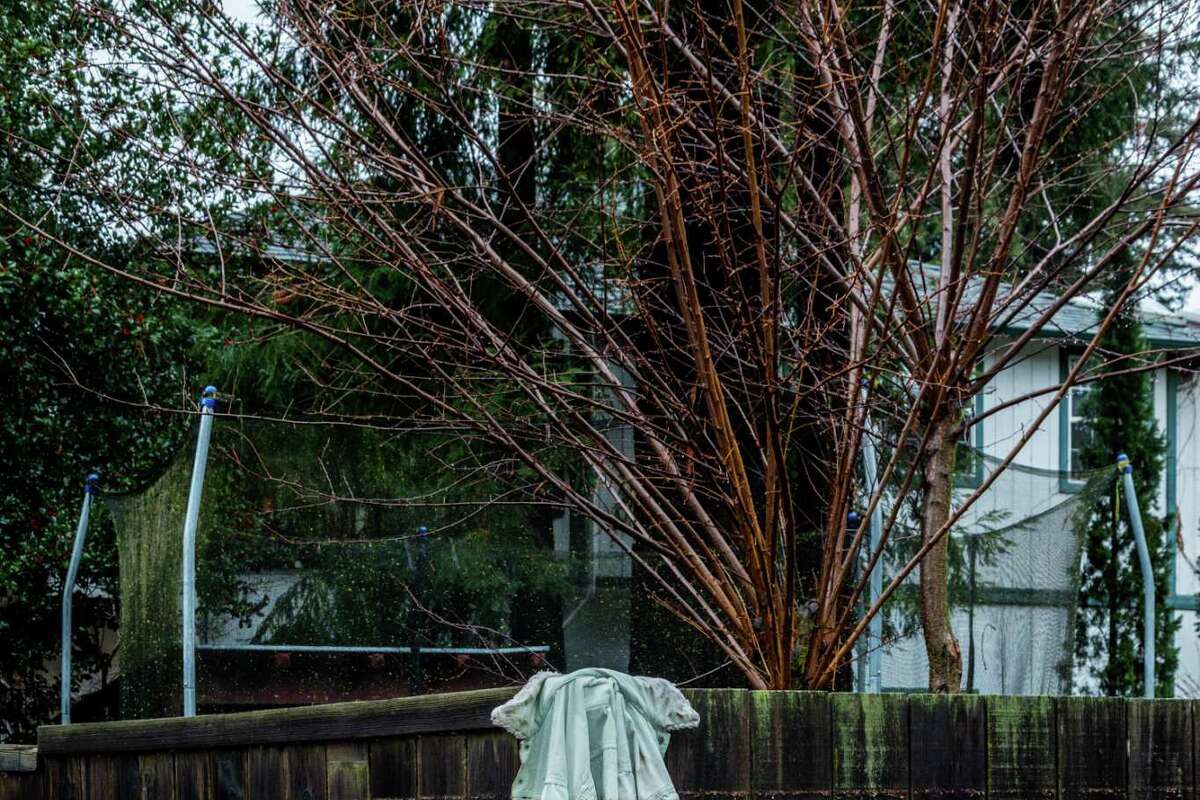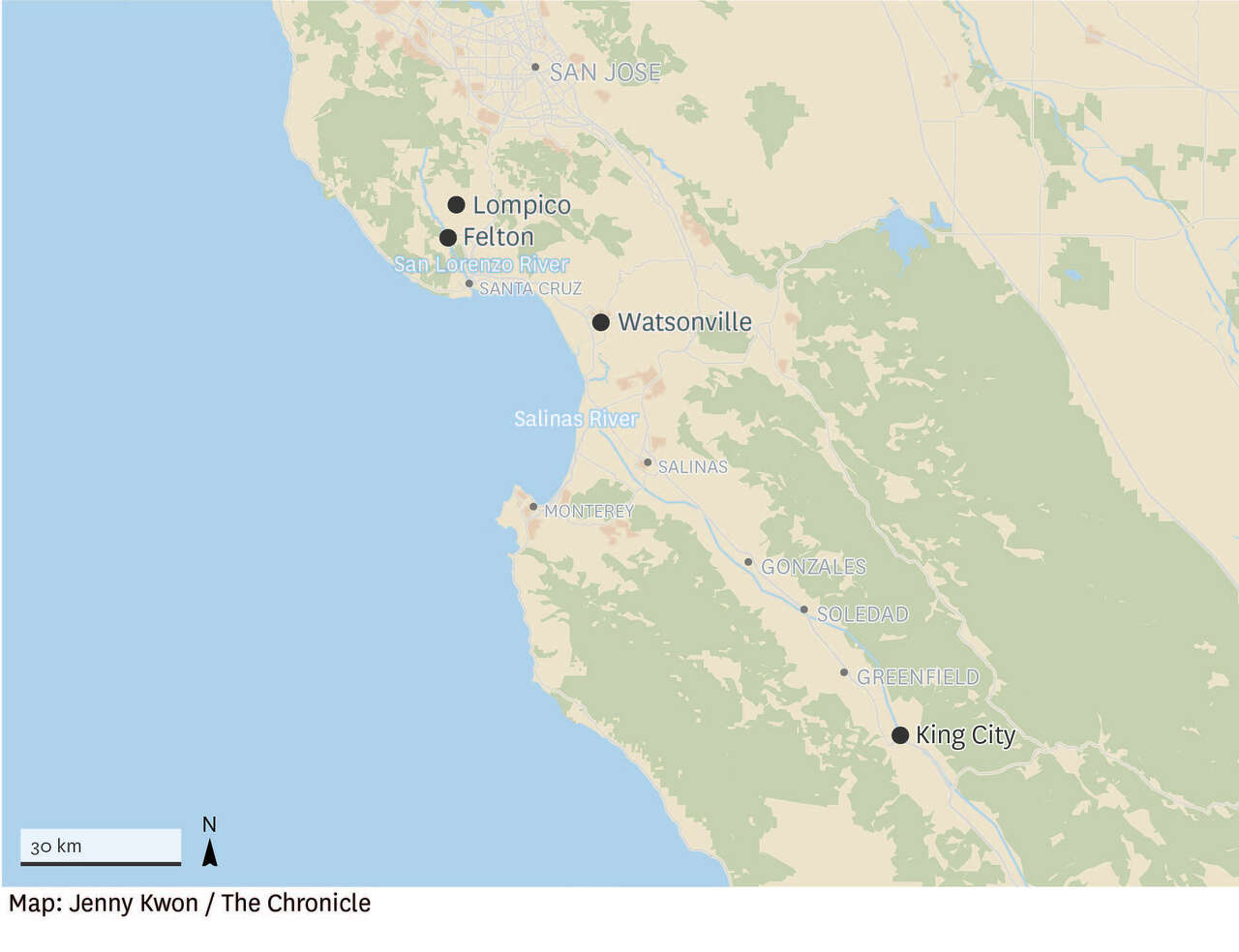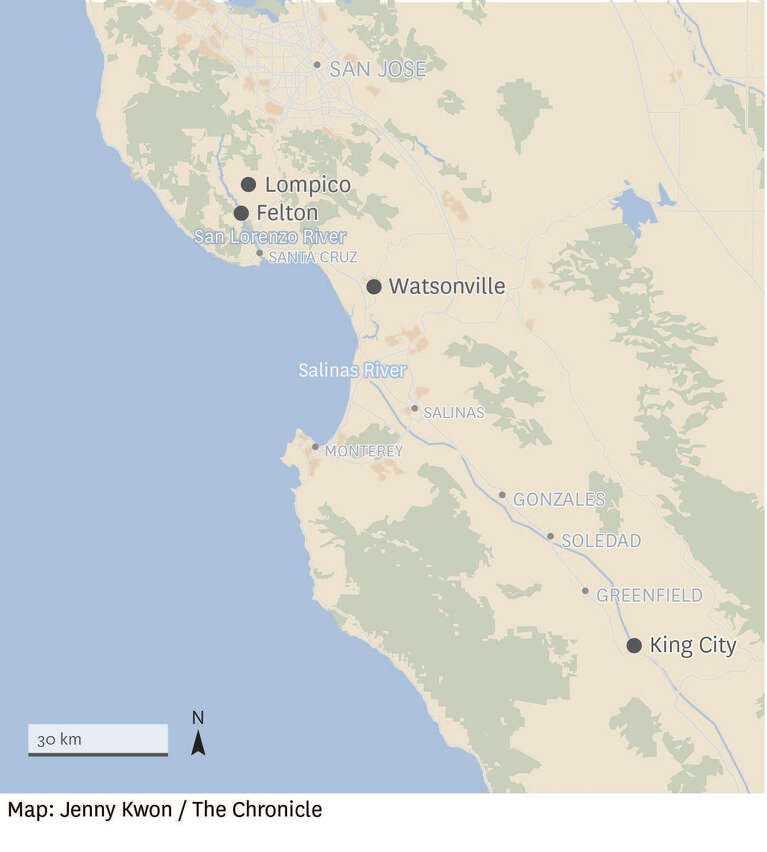Moldering houses, sodden with rainwater. Muddy back roads awaiting bulldozers to clear away debris. Families without flood insurance wondering how they will afford to repair their wrecked homes and replace belongings.
This is the reality for many low-income and working-class residents in Santa Cruz and Monterey counties, the bull’s-eye of aseries of historic atmospheric river stormsthat began on Dec. 26 and lasted through Jan. 18. The stormsdumped as much as 3 feet of waterin parts of the Santa Cruz Mountains, flooding homes, blocking critical access roads and trapping communities. Across the state, at least 21 people died in the deluges.
The floodwaters have receded, but one month later, residents are still struggling to move forward with scant resources while navigating bureaucratic labyrinths to procure promised federal aid. The storms put many residents already on the fringe into an economic tailspin. For them, what recovery looks like remains an open question.

Evidence of the flood line in the aftermath of the surging of the San Lorenzo River on the Felton Grove neighborhood of Felton, Calif. on Jan 9.
Clara Mokri, Freelance / Special to The Chronicle
The aftermath of the surging of the San Lorenzo River on the Felton Grove neighborhood of Felton, Calif. on Jan 9.
Clara Mokri, Freelance / Special to The ChronicleIn Felton’s Lompico neighborhood in Santa Cruz County, gale-force winds uprooted trees, damaging homes and cars. On New Year’s Eve, Lompico resident Valorie Torres recalled, the gusts felt like “a freight train crashing through the redwoods.”
That evening, Torres lost power at the rental home she shares with her husband and a daughter with cystic fibrosis and Down syndrome, a rare combination of conditions that requires constant care. The chaos of the days that followed would upend the family’s finances, already strained by medical bills.
Torres and her husband spent close to $500 running a propane-powered generator for six days to operate their 2-year-old daughter’s vital medical equipment. They later moved into a hotel for two weeks, racking up what Torres estimates was another $500 in bills, not counting the loss of Torres’ car, which was crushed under a falling tree.
“Every time we get ahead, it’s like we take 10 steps back,” Torres said of her family’s finances.
As the mother of a daughter who was born with special needs during the CZU Lightning Complex fires, which scorched the region two years ago, Torres has lived in a perpetual state of upheaval.
“Recovery,” she said. “I don’t even know what that word means.”

Homes in a neighborhood off of Holohan Road near Watsonville were damaged by flooding.
Brontë Wittpenn / The Chronicle造成的损失日益强烈的风暴linked to climate change has disproportionately harmed the poorest — those least able to prepare and recover from extreme weather events. But Susan True, CEO of Community Foundation Santa Cruz County, said most discussions about storm damage obscure the underlying forces that push many people to reside in high-risk areas.
Those living on the margins of urban areas — in forestlands or floodplains — have often been displaced by steep rents and home prices, especially in Santa Cruz County, where the typical home value is above $1.5 million, Zillow data shows.
“More and more people are living in drought-, flood- and fire-prone places,” True said.
Service workers and low-wage laborers tend to be the hardest hit by California’s ever-rising cost of living, True said, meaning those workers have been pushed to endure long commutes and forced to bear the heaviest burdens when wildfires and floods strike.


Isidoro Garcia didn’t know the storm was coming until it reached his Watsonville home on New Year’s Eve.
A pot of pozole was sputtering on the stove when Garcia first noticed a puddle of water pooling at his feet. Within hours, floodwater was seeping into his garage, destroying a lawnmower, weed wacker and pressure washer that he had bought for his fledgling landscaping business.
“We didn’t have any notice,” Garcia said in Spanish. “It came as a complete surprise.”
The days and weeks that followed were a frenzy as he worked to remove heaps of mud left behind.
Roughly one month after floodwaters inundated Garcia’s rental home, the carpenter and his family are still facing the fallout from the devastating rains that blindsided them during their New Year’s Eve celebrations.
Between the destroyed tools and a wrecked car, Garcia estimates his financial loss was close to $7,000. He also missed weeks of potential carpentry jobs during the storms. And without his own tools, he will have to return to the precarious life of a day laborer, taking odd jobs as they become available.
For itinerant workers such as Garcia, days of lost work during the storms will compound the challenge of recovery, said Maria Rodriguez, director of programsat the Community Action Board of Santa Cruz County.
“At the end of the month, when checks aren’t coming in for day workers … the impact is going to be huge,” Rodriguez said.

Residents of Watsonville, where many homes were damaged by flooding, watch a presentation at a local community center.
Patrick Tehan / Special to the Chronicle一些地方是在一月份的pu更大的冲击nishing storms than Santa Cruz County, where President Bidenvisited after declaring it a major disaster zone, paving the way for an influx of federal aid. The declaration is intended to funnelassistance to families and individualsfor cleanup costs. Whether the aid will reach cash-strapped households is less certain, advocates said.
“Disaster resources are intimidating to most people,” said Ray Cancino, CEO of Santa Cruz nonprofit Community Bridges. “There are a lot of hidden realities why people don’t ask for help.”
Some families are afraid because of their immigration status, Cancino said. Others are afraid of being displaced if inspectors deem their homes unsafe or ineligible to be rebuilt. In some cases, he said, the county can reassess taxes on a damaged property or require extensive upgrades.
Though there are exceptions,in many casesundocumented immigrants are barred from applying and receiving federal aid.
Language is another barrier in a region where Spanish and Indigenous translation services lag, Cancino said. The result, he said, is that those with the greatest needs are often the least likely to hear about oncoming storms or recovery resources.
For Nicolas Parral, a field worker from Oaxaca, Mexico, difficulties during an already slow work season were compounded by the historic storms.

Cynthia Parral, 29, grabs bags of clothes after a series of storms caused flooding of the homeless encampment where her family lives near Highway 101 in King City (Monterey County).
Brontë Wittpenn / The ChronicleAs January progressed, a mix of rainfall and runoff from the Monterey hills swelled the Salinas River, pushing it above flood level. A community of unsheltered residents who lived along the riverbanks in King City were forced to flee, including Parral.
“It’s been really hard,” Parral said. He and his family immigrated to the Central Coast just three months ago in an effort to escape cartel violence.
The flooding meant Parral, Teofila Gonzalez — Parral’s wife — and their four children had to gather their belongings in haste from their home, a structure constructed of plywood, tires and tarp. Over the course of the month, the Parrals attempted to return, but the threat of flooding persisted for weeks.
“When I evacuated I didn’t want to return back to the camp with my kids because it was so dangerous,” Parral said in Spanish.
For future storms, Cancino, of Community Bridges, sees children as a possible resource to connect their families to much-needed resources and information. School districts are “trusted messengers” that can email and text parents to help ensure warnings and alerts reach more families, not just those already tapped into local warning systems.

Flooding reached the backyard of Mike Cisneros’ home on Anderson Lane in Watsonville. The home sits on the banks of Kelly Lake and has experienced flooding before.
Brontë Wittpenn / The ChronicleHe also sees an opportunity to restructure how post-storm recovery money is distributed, with the goal of prioritizing the neediest families, rather than giving out aid on a first-come, first-served basis.
True, of the Community Foundation, said local nonprofits and philanthropists are already helping to meet residents’ urgent needs with small grants before federal aid arrives. That could tide some over in the immediate future. But for those who suffered the most in the storms, which unleashed damages and impacts across the state at a scale not seen in decades, it’s early in the recovery.
“It is so important that we don’t lose sight of the invisible people who keep California’s economy running,” True said.
San Francisco Chronicle weather science editor Hannah Hagemann and Chronicle photo editor Ash Adams edited this story.
Nora Mishanec is a San Francisco Chronicle staff writer, and Brontë Wittpenn and Santiago Mejia are Chronicle staff photographers. Email: nora.mishanec@sfchronicle.com, bronte.wittpenn@sfchronicle.com, smejia@sfchronicle.com Twitter: @NMishanec, @BronteWittpenn, @SantiagoMejia


